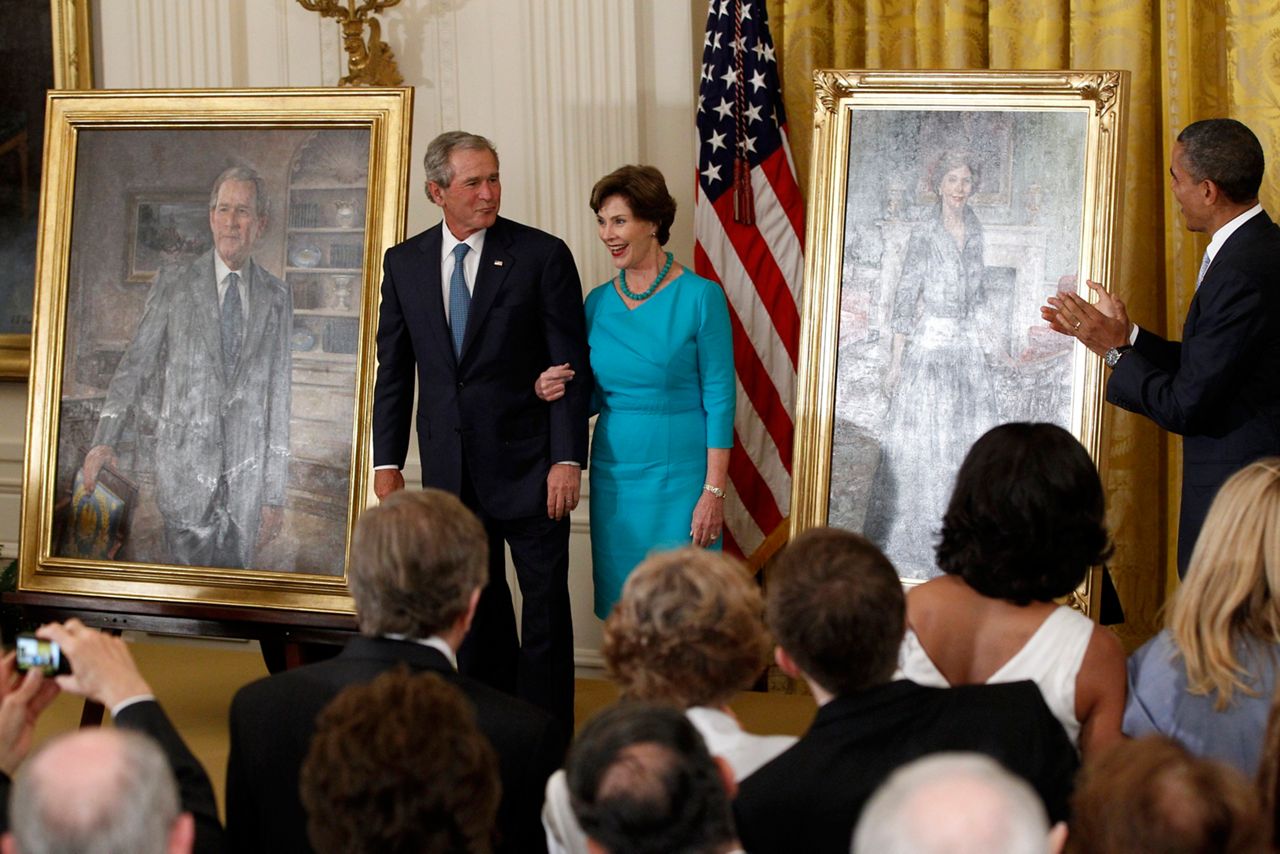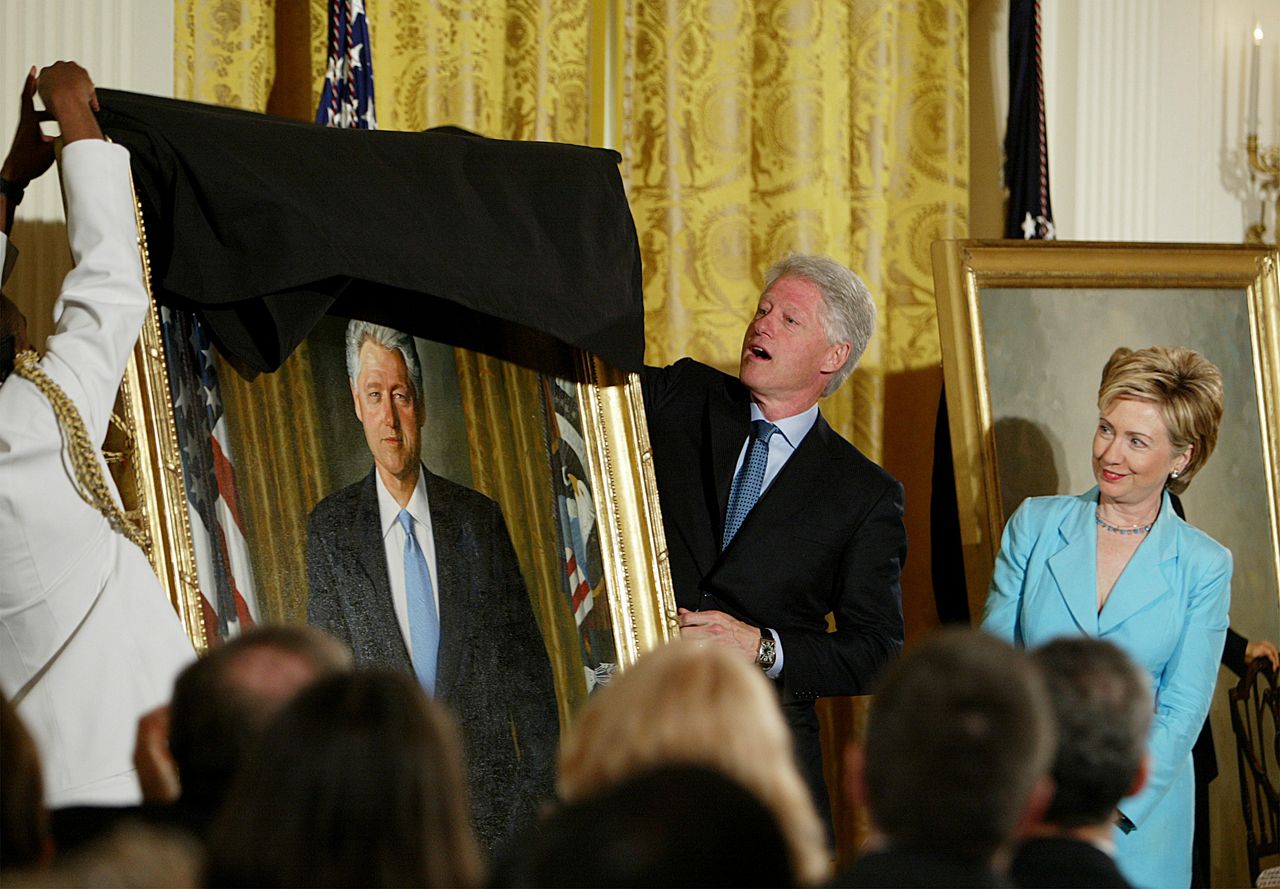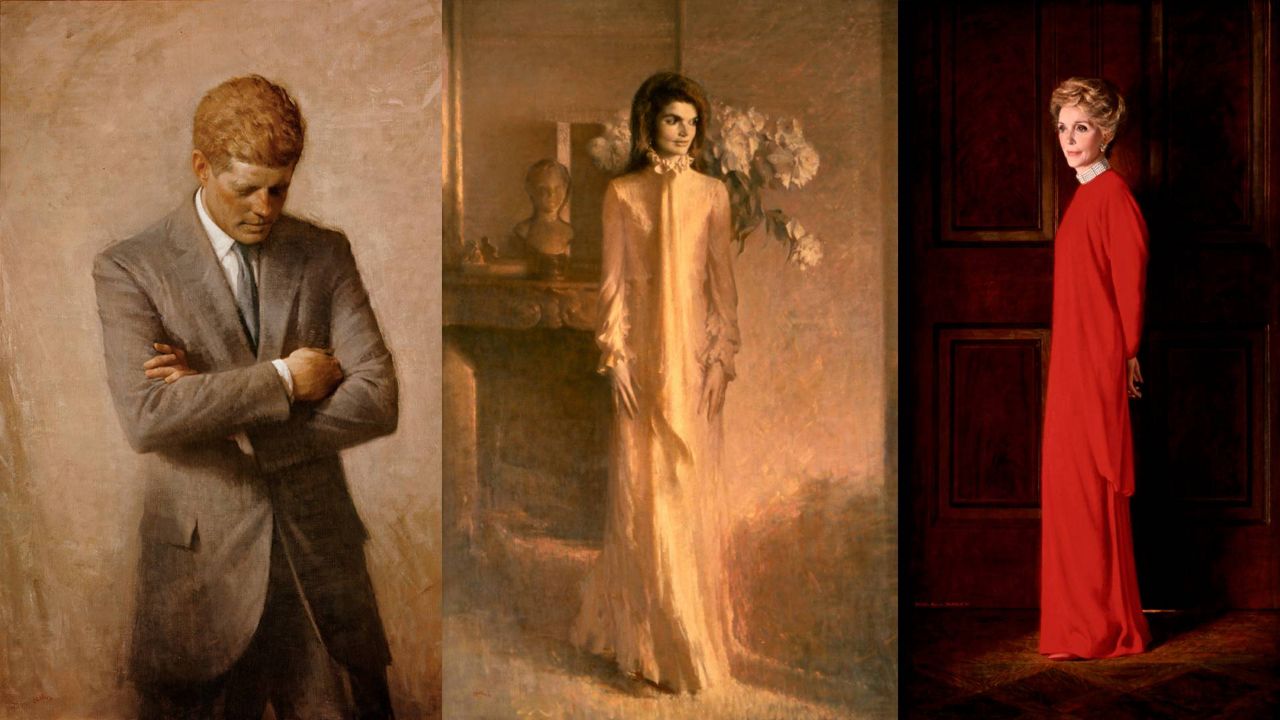A Washington tradition will resume on Wednesday when former president Barack Obama and first lady Michelle Obama return to the White House for the unveiling of their official portraits.
The decades-old custom — hosted by the current president to recognize his predecessor — was delayed for the Obamas, after former president Donald Trump neglected to invite them back to reveal their portraits.
The public unveiling ceremonies began in 1978, when Jimmy Carter first hosted Gerald and Betty Ford, and they’ve become a tradition mostly ever since, though Carter himself declined to have an event of his own.
They’re usually collegial affairs — a show of unity in a city known for division and partisanship.
“It’s a kind of a passing of the torch, showing to the American people that we don't hold it against a president who defeated us,” said Barbara Perry, director of presidential studies at the University of Virginia’s Miller Center.
The last unveiling took place 10 years ago, when the Obamas hosted George W. Bush and Laura Bush back at the White House for a humor-filled affair.
“As you wrestle with tough decisions, you’ll now be able to gaze at this portrait and ask ‘What would George do?’” Bush quipped.

“George, I will always remember the gathering you hosted for all the living former presidents before I took office. Your kind words of encouragement. Plus, you also left me a really good TV sports package,” Obama joked of Bush.
But the friendly tradition skipped a presidency when President Trump, who famously bucked norms during his four years in office, did not hold a ceremony for the Obamas.
When they return on Sept. 7, their ceremony is expected to be more like a reunion, as Biden hosts the man he served as vice president for eight years. Both the two men and their wives formed a close friendship.
“It has to be special for a former president and first lady to come back and see their portraits revealed… joining this gallery of portraits that are in the White House, portraits that they walked by every single day of their presidency,” said Stewart McLaurin, president of the White House Historical Association.
“And now, there they are among those, and they become perpetual.”
The White House Historical Association has shepherded and funded presidents and first ladies’ official portraits since 1965, and they still organize the tradition today.

The artist of each painting isn’t revealed until the day of the ceremony at the White House.
Sometimes an artist is chosen more than once, such as Aaron Shikler, who painted now-famous portraits of John F. Kennedy and Jacqueline Kennedy, later creating a similar image of Nancy Reagan.

“In the early years of our country, Americans didn't know what their presidents and first ladies looked like. They weren't on the evening news,” McLaurin said. “So the portraits had to be created so Americans would know what their president and first lady looked like.”
“With these modern presidents … it's more about how that president and first lady sees themselves. The artists they choose, the background or no background, or what's in the background that they choose,” he added. “It is a glimpse into their mind.”
After next week, the question becomes whether President Biden will invite Donald Trump, who still hasn’t conceded the 2020 election and who broke with norms once again when he didn’t host the Bidens during the White House transition.
“I would hope that the Bidens would continue the tradition of inviting the former president to come back,” Perry said. “Whether he would? I sort of doubt that Trump would.”
“But on the other hand, it would make him look presidential and make him part of the history of the White House and the presidency,” she added.
Trump also flouted tradition when his staff moved the portraits of Bill Clinton and George W. Bush out of a busy hallway, to a small, rarely used dining room. They were put back at the time of Biden’s inauguration last year.



